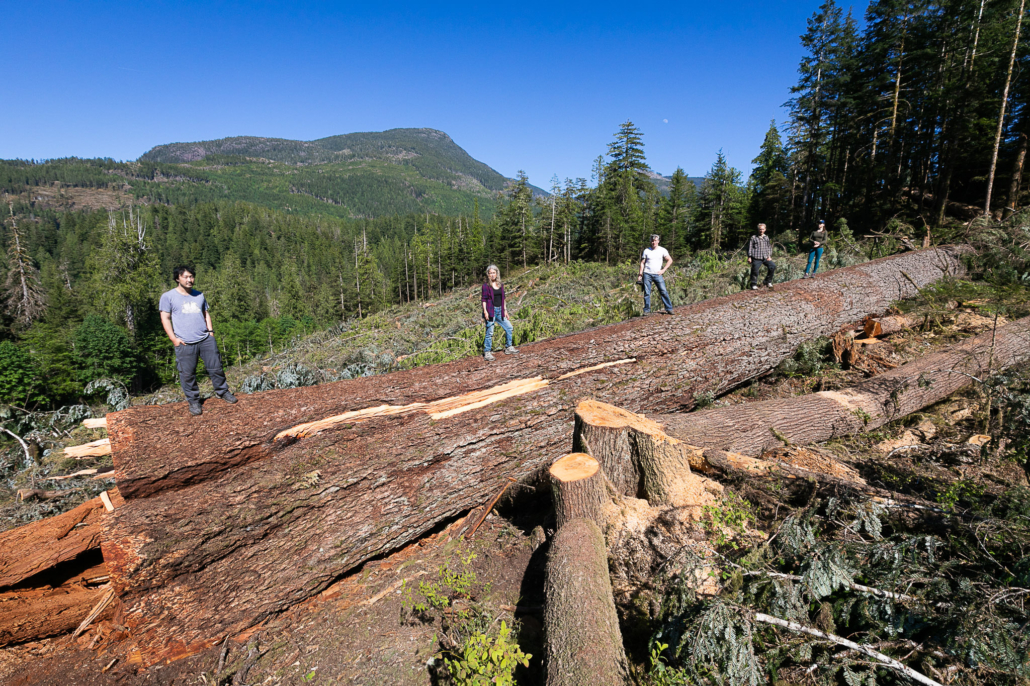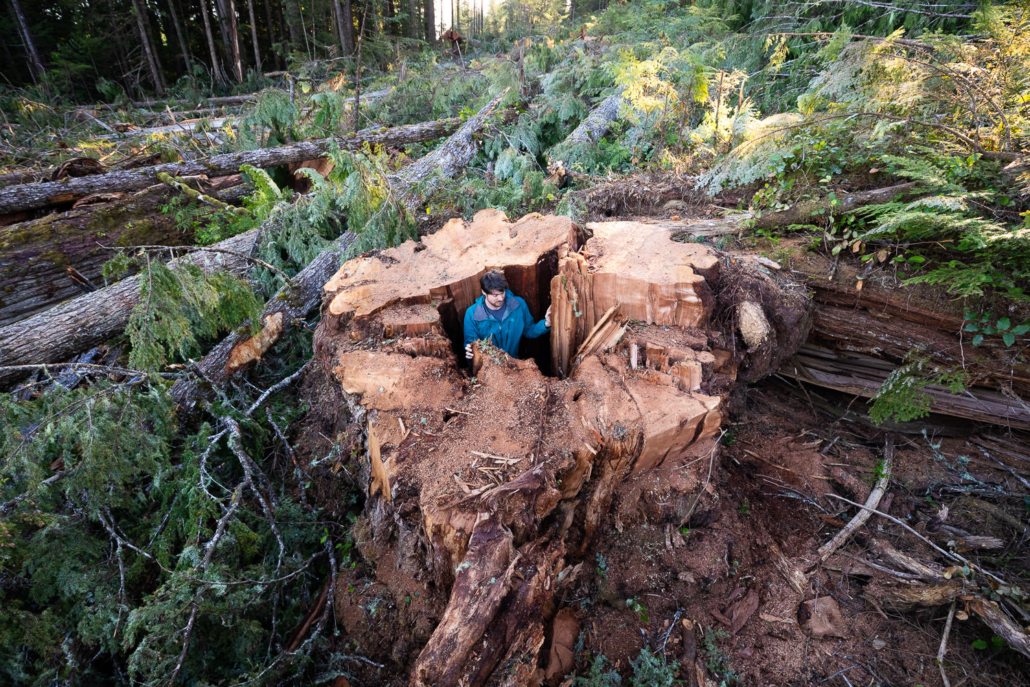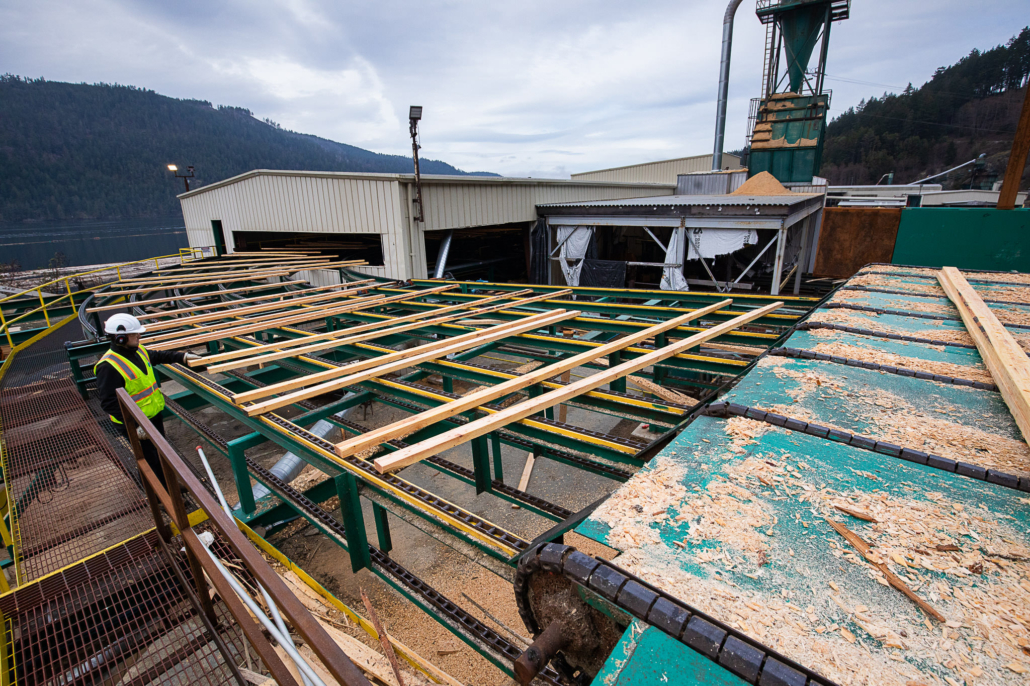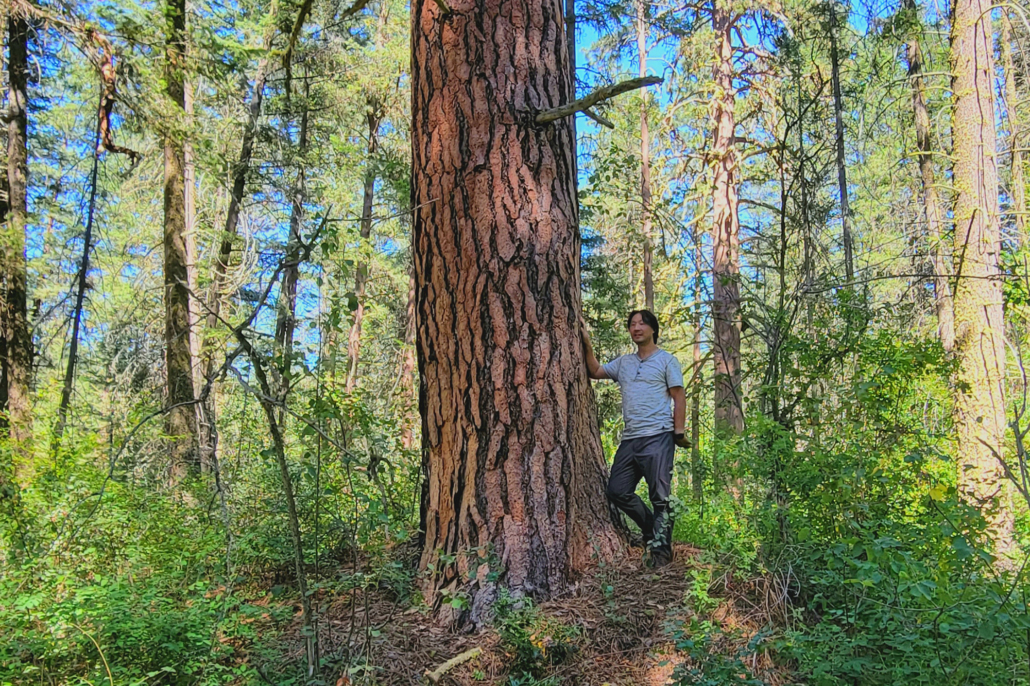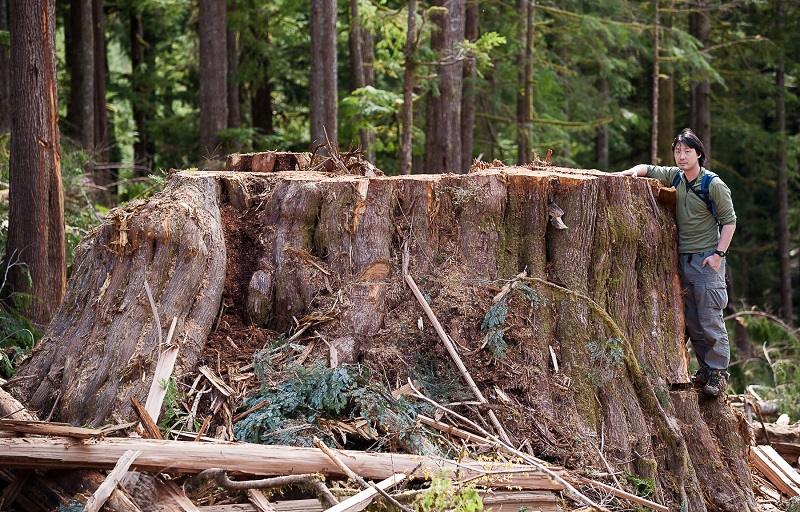 May 4 2017
May 4 2017Time Lapse Forest Cover Map Shows the Progressive Demise of Vancouver Island’s Old-Growth Forests over the past Century
For Immediate Release
Time Lapse Forest Cover Map Shows the Progressive Demise of Vancouver Island’s Old-Growth Forests over the past Century
Victoria – A time lapse map of Vancouver Island has been released showing the demise of the Island’s old-growth forests over a century of industrial logging. Well over 90% of the original, high productivity, low elevation old-growth forests on Vancouver Island with the biggest trees have already been logged, according to the data analysis, while over 75% of the moderate to high productivity old-growth forests (ie. the commercially valuable old-growth forests) have been logged. Conservation groups, businesses and chambers of commerce, forestry workers and unions, naturalist clubs, city and town councils across BC, and many First Nations are calling on the provincial government to expand protection for BC’s endangered old-growth forests. Instead, a sustainable, value-added second-growth forest industry would support and enhance employment for BC’s forestry workers.
See the time-lapse map sequence here: https://youtu.be/c9hTF2oxLjo
A series of new maps have been developed and placed in a time-lapse sequence to show the demise of Vancouver Island’s old-growth forests for over a century. The maps, developed by Commons BC for use by conservation groups and the public, start in 1900 and end in 2016, and were created through a combination of satellite imagery, government data, and archives of old aerial photos.
They show that the productive old-growth forests have been progressively clearcut across Vancouver Island, starting with the flat lowlands on southeastern Vancouver Island at the turn of the century and progressing west and north through the mountains, up the major valleys and across steep, rugged terrain in recent decades.
“These maps make it clear how successive governments have overseen and facilitated the demise of the greatest ancient rainforests on earth here on Vancouver Island for over a century – and it’s still going on at a rapid pace today. Our second-growth tree plantations don’t replicate the original ancient forests for species, the climate, water conservation, or for recreation and tourism opportunities, and they are to be logged again every 50 to 80 years. Therefore old-growth forests under BC’s system of logging are a non-renewable resource – we’re mining our old-growth forests. Once they are logged, they are not coming back, and future generations will be shocked to see how governments were thinking in this era to take these ecosystems to the brink of extinction,” stated Vicky Husband of Commons BC.
“Next to the US redwoods, Vancouver Island’s old-growth forests are the grandest on Earth. Here, trees can grow as tall as skyscrapers and as wide as living rooms. Given the fact that they are vital for tourism, endangered species, the climate, clean water, and many First Nations cultures – and that most of our forests are now second-growth today – it should be a no-brainer that the BC government needs to move fast to save what’s left of our scarce ancient forests”, stated Ken Wu, Executive Director of the Ancient Forest Alliance. “Instead, they’ve continued to spin the tale that old-growth forests are not endangered on Vancouver Island by including vast tracts of the stunted ‘bonsai’ trees growing in bogs and at the tops of mountains in their statistics. It’s like including your Monopoly money with your real money, and then claiming to be a millionaire, so why stop spending?”
“The full transition into a purely second-growth forest industry is inevitable when the last of the unprotected old-growth forests are logged. We’re just saying let’s do it sooner, while we still have significant tracts of these ancient forests still standing”, stated Arnold Bercov, President of the Public and Private Workers of Canada (PPWC). “By ending raw log exports and creating incentives and regulations for processing and value-adding second-growth logs, we can sustain and enhance forestry employment levels while protecting BC’s endangered old-growth forests at the same time.”
BC’s premier business lobby, the BC Chamber of Commerce, representing 36,000 businesses, passed a resolution last May calling on the province to expand protection for BC’s old-growth forests to support the economy, after a series of similar resolutions passed by the Port Renfrew, Sooke, and WestShore Chambers of Commerce. See: www.staging.ancientforestalliance.org/news-item.php?ID=1010
Both the Union of BC Municipalities (UBCM), representing the mayors, city and town councils, and regional districts across BC, and Association of Vancouver Island and Coastal Communities (AVICC), representing Vancouver Island local governments, passed a resolution last year calling on the province to protect the Vancouver Island’s remaining old-growth forests by amending the 1994 land use plan. See: www.staging.ancientforestalliance.org/news-item.php?ID=1057
The Private and Public Workers of Canada (PPWC), formerly the Pulp, Paper, and Woodworkers of Canada, representing thousands of sawmill and pulp mill workers across BC, recently passed a resolution calling for an end to old-growth logging on Vancouver Island. See: https://staging.ancientforestalliance.org/news-item.php?ID=1100
The Ahousaht First Nation band north of Tofino in Clayoquot Sound recently announced that 82% of their territory will be off-limits to commercial logging. They now need provincial legislation and funding to help make their vision a reality.
The Ancient Forest Alliance is calling on the BC government to implement a comprehensive science-based plan to protect all of BC’s remaining endangered old-growth forests, and to also ensure a sustainable, value-added second-growth forest industry.
Old-growth forests are vital to sustain unique endangered species, climate stability, tourism, clean water, wild salmon, and the cultures of many First Nations. On BC’s southern coast, satellite photos show that at least 75% of the original, productive old-growth forests have been logged, including well over 90% of the valley bottoms where the largest trees grow. Only about 8% of Vancouver Island’s original, productive old-growth forests are protected in parks and Old-Growth Management Areas. Old-growth forests – with trees that can be 2000 years old – are a non-renewable resource under BC’s system of forestry, where second-growth forests are re-logged every 50 to 100 years, never to become old-growth again.
See maps and stats on the remaining old-growth forests on BC’s southern coast at: www.staging.ancientforestalliance.org/old-growth-maps.php
In order to placate public fears about the loss of BC’s endangered old-growth forests, the BC government’s PR-spin typically over-inflates the amount of remaining old-growth forests by including hundreds of thousands of hectares of marginal, low productivity forests growing in bogs and at high elevations with smaller, stunted trees, lumped in with the productive old-growth forests, where the large trees grow (and where most logging takes place). See a rebuttal to some of the BC government’s PR-spin and stats about old-growth forests towards the BOTTOM of the webpage: https://www.ancientfo<wbr

